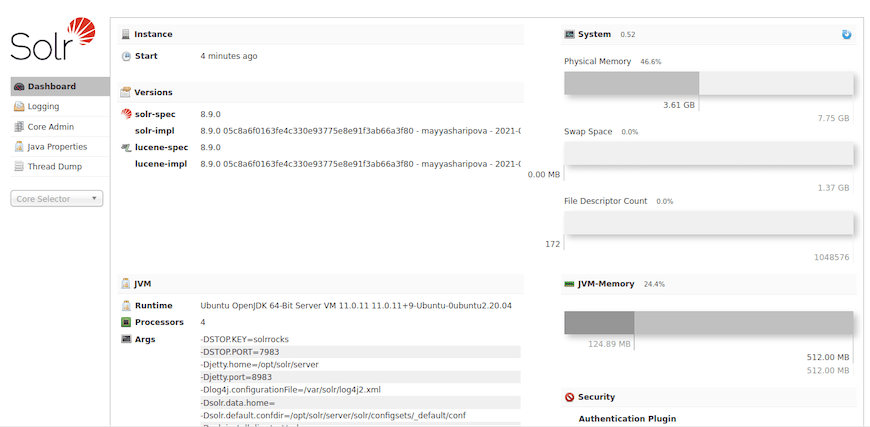
In this tutorial, we will show you how to install and configuration of Apache Solr on Ubuntu 20.04 LTS. For those of you who didn’t know, Apache Solr is an open-source search platform written on Java. It is based on Apache Lucene and is written in Java. Just like Elasticsearch, it supports database queries through REST APIs. Solr aims at providing distributed indexing, replication, and load-balanced querying with automated failover and recovery.
This article assumes you have at least basic knowledge of Linux, know how to use the shell, and most importantly, you host your site on your own VPS. The installation is quite simple and assumes you are running in the root account, if not you may need to add ‘sudo‘ to the commands to get root privileges. I will show you the step-by-step installation of Apache Solr on a Ubuntu 20.04 (Focal Fossa) server.
Prerequisites
- A server running one of the following operating systems: Ubuntu 20.04, 18.04, 16.04, and any other Debian-based distribution like Linux Mint.
- It’s recommended that you use a fresh OS install to prevent any potential issues.
- SSH access to the server (or just open Terminal if you’re on a desktop).
- A
non-root sudo useror access to theroot user. We recommend acting as anon-root sudo user, however, as you can harm your system if you’re not careful when acting as the root.
Install Apache Solr on Ubuntu 20.04 LTS Focal Fossa
Step 1. First, make sure that all your system packages are up-to-date by running the following apt commands in the terminal.
sudo apt update sudo apt upgrade
Step 2. Installing Java.
Apache Solr required Java if you don’t have java installed on your system run the following command:
sudo apt install openjdk-8-jdk
Verify the installed Java version:
java -version
Step 2. Installing Apache Solr on Ubuntu 20.04.
Run the following command to download Apache Solr:
cd /opt wget https://archive.apache.org/dist/lucene/solr/8.5.2/solr-8.5.2.tgz
Then, extract the Apache Solr service installer script from the downloaded Solr archive file:
tar xzf solr-8.5.2.tgz solr-8.5.2/bin/install_solr_service.sh --strip-components=2 sudo bash ./install_solr_service.sh solr-8.5.2.tgz
Once installed, you can simply use the following commands to Start and Stop of Solr service:
sudo systemctl start solr sudo systemctl stop solr
Step 3. Create Collection in Solr.
Create the first collection in Apache Solr using the following command:
sudo su - solr -c "/opt/solr/bin/solr create -c mycollection -n data_driven_schema_configs"
Step 4. Accessing Apache Solr.
Apache Solr will be available on HTTP port 8983 by default. Open your favorite browser and navigate to http://your-domain.com:8983 or http://your-server-ip-address:8983. If you are using a firewall, please open port 8983 to enable access to the control panel.

Congratulations! You have successfully installed Apache Solr. Thanks for using this tutorial for installing Apache Solr in Ubuntu 20.04 LTS Focal Fossa system. For additional help or useful information, we recommend you check the official Apache Solr website.